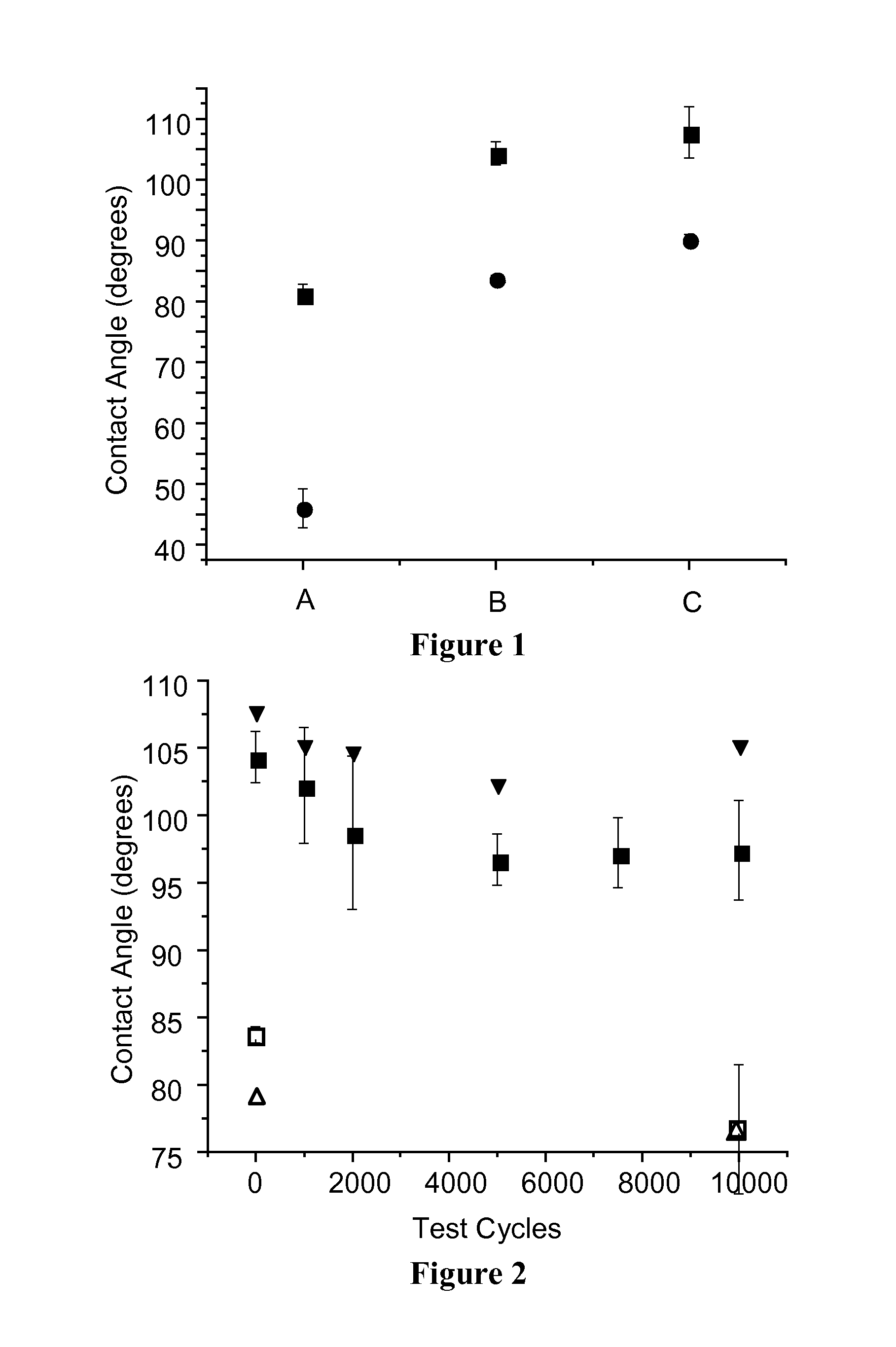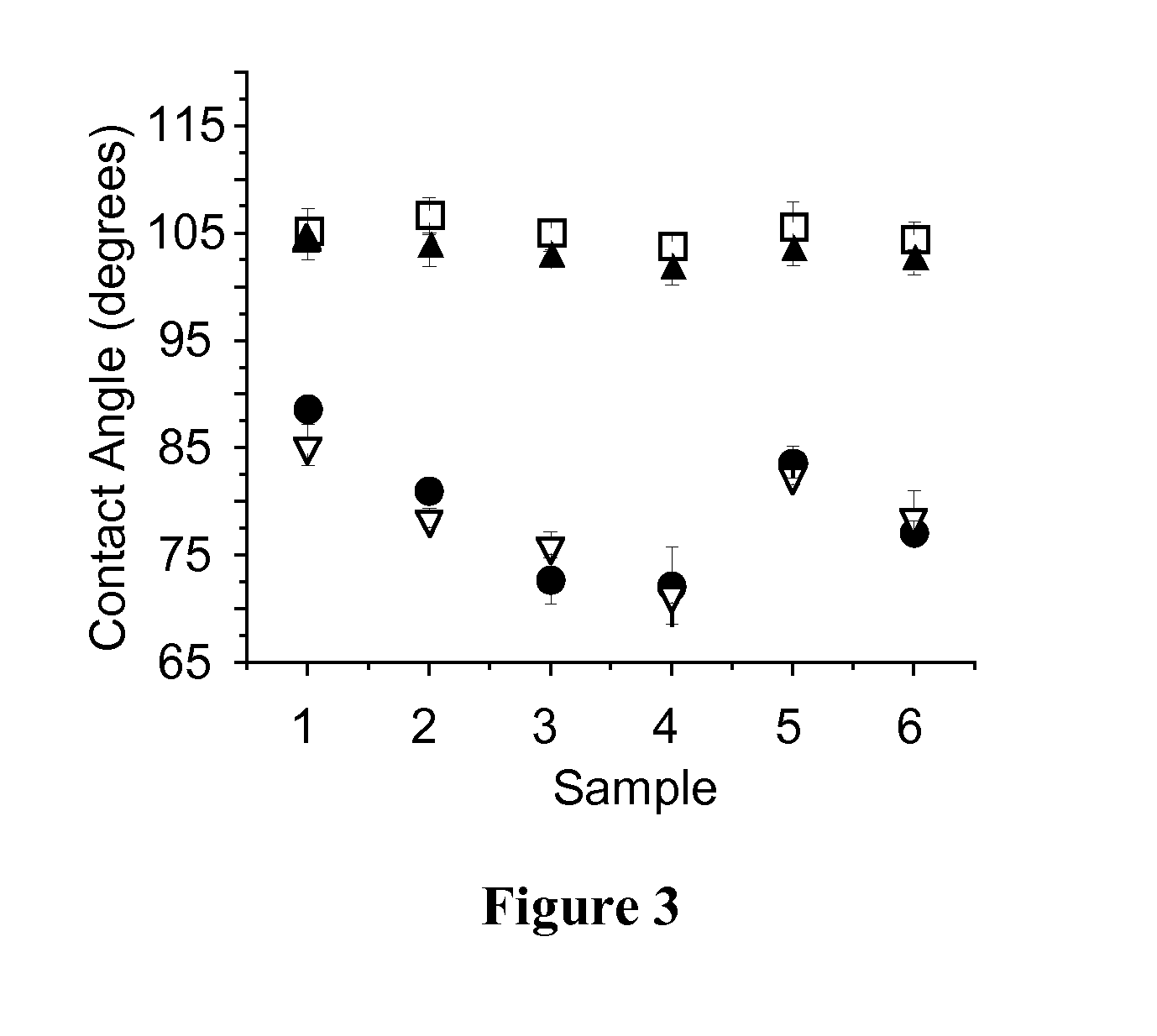Surface Treatment and Article
a surface treatment and article technology, applied in the field of surface treatment, can solve the problems of difficult to remove oily residues, high cost of materials, etc., and achieve the effect of less time and less expensiv
- Summary
- Abstract
- Description
- Claims
- Application Information
AI Technical Summary
Benefits of technology
Problems solved by technology
Method used
Image
Examples
first embodiment
[0014]A first embodiment is a method comprising providing a surface comprising surface hydroxyl groups; applying an amine to the surface to form a first coated surface; applying a fluorinated silane compound to the first coated surface to form a second coated surface; and reacting the silane with the amine and surface hydroxyl groups to form a crosslinked network between the amine, fluorinated silane and surface.
[0015]In one embodiment, the provided surface is glass. The provided surface may be present as a layer on a substrate, for example, the provided surface may be a glass layer on a substrate. In another embodiment, the provided surface is a glass substrate. In yet another embodiment, the provided surface is a polymer, either alone or as a layer on a substrate.
[0016]The provided surface comprises surface hydroxyl groups. As used herein, the term hydroxyl group refers to the functional group (—OH). In some embodiments, the surface hydroxyl group may be present in the form of a s...
second embodiment
[0028]A second embodiment is an article comprising a substrate; and a layer chemically bonded to the substrate comprising a fluorinated silane crosslinked with an amine.
[0029]In one embodiment, the substrate is glass. In another embodiment, the substrate is a polymer.
[0030]In one embodiment, the layer comprising a fluorinated silane crosslinked with an amine includes silicon of the silane bonded to nitrogen of the amine. The layer is chemically bonded to the substrate via bonds between the silicon of the silane and oxygen of the surface hydroxyl groups.
[0031]In one embodiment, the layer is a hydrophobic surface, for example, the surface has a water contact angle greater than 95 degrees, such as, greater than 98 degrees, greater than 100 degrees, or greater than 105 degrees. In one embodiment, the surface is oleophobic, for example, the surface has an oleic acid contact angle greater than 70 degrees.
[0032]Various embodiments will be further clarified by the following examples.
[0033]G...
PUM
| Property | Measurement | Unit |
|---|---|---|
| Water contact angle | aaaaa | aaaaa |
| Contact angle | aaaaa | aaaaa |
| Hydrophobicity | aaaaa | aaaaa |
Abstract
Description
Claims
Application Information
 Login to View More
Login to View More - R&D
- Intellectual Property
- Life Sciences
- Materials
- Tech Scout
- Unparalleled Data Quality
- Higher Quality Content
- 60% Fewer Hallucinations
Browse by: Latest US Patents, China's latest patents, Technical Efficacy Thesaurus, Application Domain, Technology Topic, Popular Technical Reports.
© 2025 PatSnap. All rights reserved.Legal|Privacy policy|Modern Slavery Act Transparency Statement|Sitemap|About US| Contact US: help@patsnap.com


